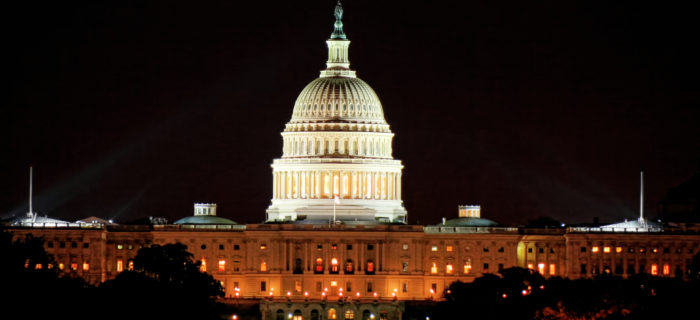Democrats Must Show that Politics Can Improve Struggling People’s Lives
Throughout the year, Food First plans to provide perspective on some of the policies that the new Biden administration, as well as the Democratic majority in Congress, are proposing. We’ll examine the positive, negative, and limitations of these actions and their potential for improving the lives of those experiencing poverty and hunger. We will also offer suggestions to improve these policies, as well as highlight other possible alternatives that will have a more meaningful, structural impact on poverty and hunger. With these perspectives, we aim to shed more light on the impacts of social and economic policy on poverty and hunger.
In the absence of government intervention since the summer of 2020, the pandemic-driven economic crisis has led to sharp rises in both poverty and hunger. Both robust and immediate measures from the new Biden Administration will be necessary to curb the worst effects of the crisis.
Similar to 2009, a new Democratic majority has entered Congress with many looking to them for the FDR-style, New Deal policy initiatives Biden called for on the campaign trail. At the start of President Obama’s first term in 2009, the Democrats enacted a meager bailout that overwhelmingly benefited the top rungs of society. This bailout was quickly followed by a retreat into austerity politics which led to a “right-wing wave” and Republican control of the House of Representatives for the next 10 years. Incoming President Joe Biden may have chosen to hang a portrait of FDR in his oval office, but his politics, as well as the majority of Democrats, over the decades have been anything but Rooseveltian.
But with the global pandemic and the related economic crises comes new opportunities. A proposed $1.9 trillion stimulus package along with other legislation such as a $15 dollar minimum wage, if enacted soon, could make a significant difference in the long-neglected fight against poverty and hunger in the United States. A failure by a Democratically controlled Congress and Executive Branch to act decisively in this moment of crisis, will not only be a lost opportunity to institutionalize and make permanent major reforms that will help poor and working people, but will most likely lead to yet another right-wing resurgence in 2022, thus dashing again, any hope for advancement of a progressive agenda. The goal of progressives and social movements this time should be to ensure that the new President and the Democratic party actually deliver concrete policies and show that politics can actually improve people’s lives.
Learning from the CARES Act
While many progressives understandably criticized the CARES Act, which was passed in March 2020 at the beginning of the pandemic, for acting as a massive bailout for corporations and the wealthiest, other progressives have shown that the results were much more mixed. While the CARES Act didn’t go nearly far enough, it did successfully redistribute resources in the form of direct cash into the hands of households and small businesses in an unprecedented way. What we did see as a result of the CARES Act, was the ability of Federal intervention to put a dent in poverty, which was critically needed during an economic downturn.
In March and April 2020, despite the shutdown of businesses across the nation, the US actually saw the poverty rate decline 2.3% due to the CARES Act cash transfers. These transfers occurred in the form of direct stimulus checks coupled with unprecedented robust federal unemployment benefits of $600 a week that were tacked onto state unemployment payments. Low-income workers felt the immediate impact of this relief, while even gig workers,who are normally outside the safety-net of government assistance, were included in the legislation. However, since April 2020, both hunger and poverty have increased dramatically due to the complete absence of Federal intervention from August to December 2020. The $900 billion stimulus passed in December while welcomed by recipients, wasn’t nearly enough to make up for nearly six months of trying to manage household bills living solely off of unemployment.
What Needs to Happen Now and the Politics Behind It All
While many celebrated the historic wins in the Georgia Senate races, the balance of power in the Senate is controlled by the Democrats with only the slightest of margins, as Vice President Harris holds the tie breaking vote. With this “technical majority”, we are already seeing the political battles ensue in the Senate, making the passage of significant legislation increasingly difficult. The tactic of “nuking” the filibuster in order to pass legislation with a simple majority has become the latest negotiating tactic, but thus far has been thwarted by Senate Minority Leader Mitch McConnell. Unsurprisingly, some conservative Democrats like Joe Manchin of West Virginia are resisting supporting changes in the filibuster and other Senate rules. Realistically, passing any substantial legislation without being watered down via bipartisanship will likely require use of the budget reconciliation process to overcome the filibuster, which will take time. In the meantime, due to the political, economic, and social urgency of the situation, a new round of stimulus checks should be the immediate priority.
Democrats campaigned successfully on promises of $2,000 stimulus checks in the Georgia Senate runoff. But those promises have now been reduced to $1,4000 checks as part of a $1.9 trillion package proposed by the Biden Administration. This reduction is unnecessary! Not only would $2,000 in addition to the $600 already given to Americans in December only cost around another $200 billion (a small number in an era of $700 billion Pentagon budgets), it would be wise politically as well as economically to fulfill campaign promises in these polarizing times.
Stay in the loop with Food First!
Get our independent analysis, research, and other publications you care about to your inbox for free!
Sign up today!Instead, some Democrats are also pushing for further means testing on the stimulus checks, preventing even middle class Americans from benefiting. While Democrats strongly consider reducing benefits for those making $50,000, new research has shown why this cut off is arbitrary and bad policy. According to one analysis, at least 20% in all income groups below $75,000 experienced food insecurity at some point during the pandemic. As Rep. Ro Khanna recently argued, means testing like this isn’t just bad economics, it is terrible politics. Driving a wedge between poor, working class, and middle class people via means testing has backfired historically, and could do so here. Democrats should want to clearly signal to everyone that the Federal government supports struggling Americans broadly in order to keep together their already limited coalition.
While it is the job of progressives to promote even more robust stimulus spending in the form of recurring checks until the end of the pandemic, moving forward the importance of delivering the $1400 checks in the current proposal is only amplified when we look at its sheer popularity among even Republican voters. In a recent poll, 72% of Republican voters considered the $600 checks disbursed in December as “too small”. This is by far the easiest and simplest way to show immediate, material benefits of government in an age where many have no confidence in the ability of local, state or national politicians to respond to their needs. A failure to do this quickly will leave the most desperate people in a terrible position, while politically it could also weaken the position of Democrats in the eyes of the general public. Debating over means testing instead of focusing on building support for even more significant intervention is a major policy and political mistake.
An Opportunity to Reshape Childhood Poverty?
While vast federal aid in the form of stimulus checks and $600 federal unemployment benefits that lasted until July proved to be both politically popular and economically successful in curbing poverty for the poorest in the short-term (a seemingly impossible feat in American history until recently), means-tested tax credits have not. Current stimulus proposals include an increase in child tax credits and earned income tax credits, but Democrats would be better suited to turn these into universal direct cash transfers instead. As Matt Bruenig at the People’s Policy Project has shown, nearly a fifth of the country’s poorest children end up being left out by these credits. Between the difficulty in applying for these programs and the complicated nature of their rules, these anti-poverty programs leave out the poorest in all racial categories, but disproportionately hurt Black and brown people. These credits also do nothing to immediately relieve struggling families today. Instead, as Bruenig asserts, we can and should turn these complicated tax credits into universal direct cash payments of $370 a month that could slash child poverty by two-thirds. There is absolutely no legitimate reason why 1 in 5 households with children (the same amount as those experiencing hunger) never see benefits of programs that could prove to be a game changer in anti-poverty.
As Derek Thompson at The Atlantic put it, retrofitting the Social Security Administration to act in the same way for child poverty (cutting a monthly check to anyone under 18) as it once did for elderly poverty would pay off politically. While Joe Biden is certainly no FDR, and it is unlikely that Democrats will restructure these tax credits into direct payments in this upcoming stimulus package, these debates and political fights for universal direct cash payments will continue over the next two years. Already senior Democrats are drafting initial plans for concrete proposals for such direct payments to families with children. Like the direct cash payments, these universal policies would get the political buy-in by voters usually missing from mean-tested programs, and would also dramatically reduce child poverty and hunger in the future. Canada, Australia, and most countries in the EU already provide parents with these benefits, and now may be the best time for a similar political push here in the United States.
Raising the Wage Floor and Ending Poverty Wages
Beyond the aforementioned welfare policy measures, Democrats have now brought forward legislation to finally pass a $15 federal minimum wage that would also include tipped workers. This is the result of nearly a decade of organizing by the “Fight for 15” movement that started in 2012. The good news is that this would more than double the current federal minimum wage. The federal minimum wage has not increased since 2009, remaining frozen at a paltry $7.25 an hour. To give you just some idea of this injustice, the minimum wage in 1968 was $12.29 in today’s dollars! These low wages are inextricably linked with the over 40 million Americans experiencing hunger, as food is the most flexible necessity to be sacrificed when rent, medical care, or other daily needs are required.
Increasing the federal wage floor would raise wages for over 33.5 million low-wage workers across the country according to one study, while the Congressional Budget Office put their number slightly lower at 27.3 million. Workers would see a $2,800 increase in their income. Implementing a federal minimum wage of $15, while not a living wage, could reduce the amount of hunger experienced by households by over six percent. Non-white households would benefit at higher rates from this wage increase, as studies have found that a $15 minimum wage would help 38.1% of Black workers, 33.4% of Latino workers 23.2% of white workers, and 19.6% of Asian workers. But we cannot be too excited, as this increase in the minimum wage would be gradual, taking until 2025 for all states to raise their minimum wages to $15.
When the “Fight for 15” began 2012, this may have been closer to a living wage. By 2025, cost of living expenses are bound to only increase, making this potential raise less substantial than it needs to be. In addition to this, the raise (if passed by Congress) may risk being overturned in 2022, if Democrats lose ground politically.
The raise certainly doesn’t match the level of productivity of workers that has increased dramatically since the 1970s in relation to wages. But what is positive here is that the new federal minimum wage will be indexed to inflation, preventing the purchasing power of the minimum wage from eroding over time as it has in the past. Nonetheless, the potential gains will still be meaningful for the lowest wage workers in the country, and could set the bar higher for living wage fights to come. Ironically, the impacts of an increase in the federal minimum wage would be seen most in Red states whose wage floors are at the federal minimum, as well as in the food system itself, where the vast majority of workers receive low wages.
As of 2019, the median wage for food workers in the United States was $11.00 an hour. For tipped workers, the federal minimum wage is set at $2.13 an hour, which hasn’t budged in years due to the politically organized and powerful restaurant industry’s lobby, the National Restaurant Association. While politicians like Rashida Tlaib are right when saying that the federal minimum wage should be $20 at this point, doubling the federal minimum wage up to $15 will still have a significant impact in the food industry where over 13% of its workers must use SNAP benefits to supplement low wages and 86% of its workers are in jobs with poverty or near-poverty wages. This will indeed be a victory, one that has been only possible due to the “Fight for 15” campaign. But in an industry that is heavily labor intensive and relies on low-wage exploitation for its profit margins, we will have to remain vigilant at how the food industry, much of which has been slammed by the pandemic, will respond to these cuts in their profits.
The Bar is Extremely Low, But This Is a Start
While these reforms are still either inadequate or even poorly designed, getting them passed could set a foundation for further progress on improvements and more substantial reforms that go a long way in mitigating poverty, hunger, and inequality in the near future. Decades of anti-inflationary policies and relentless cutbacks to the already meager US welfare state (when compared to other industrialized nations) have played a pivotal role in driving poverty and persistent hunger in the world’s wealthiest nation, thus setting the bar for progress extremely low. All things considered, we are at a much better point than we were with the inadequate, austere governmental steps that were taken during the Great Recession in 2009.
Progressives and social movements have more clout than they did in 2009, which is a big reason why mainstream politicians are actually thinking bigger than in the past. However, a failure to pass even these modest measures and an inability to build upon these small gains in the next three months will not only be a missed opportunity, but may set the stage for conservatives to take back Congress in 2022. Not making the same mistakes of the past, and finding a way to legislate with a simple majority is more important than ever to help struggling people now. Merely acting as the party interested in redistributing wealth and resources, but never following through and blaming its failures on Republican opposition, isn’t going to cut it. In the past, crises have led to permanent social democratic reforms like welfare provisions which improved people’s lives and pushed the boundaries of what is politically possible.
Let’s not let this opportunity go to waste.
Cover Photo by Daniel Mennerich


 Help Food First to continue growing an informed, transformative, and flourishing food movement.
Help Food First to continue growing an informed, transformative, and flourishing food movement.




